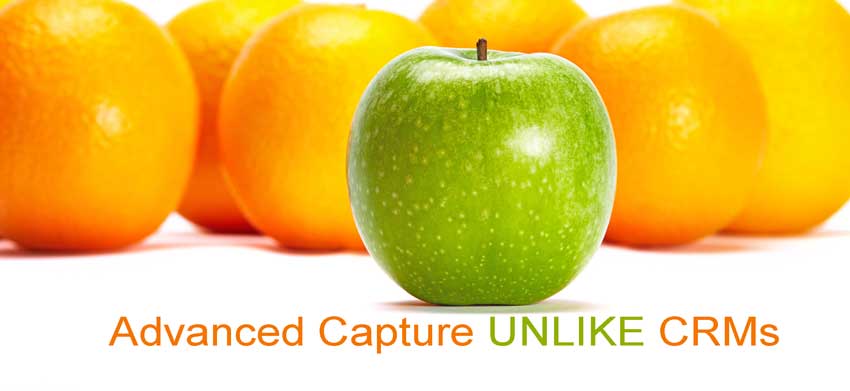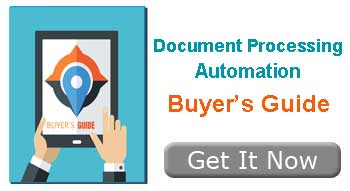
Advanced capture is unlike CRM, and the capabilities and business use of each are distinctly different. This statement probably elicits reactions similar to, “of course, the two are different!” Advanced capture is about driving efficiencies automating document processing tasks as quickly and as accurately as possible, whereas Customer Relationship Management (CRM) is about making the tasks and processes associated with customer relationship activities more efficient.
Evaluating CRMs vs Advanced Capture
So if the two are so different, why do organizations take a very similar approach when evaluating candidate solutions?
With CRM, it is typical to compare different options by reviewing the capabilities of the software, which involves trying-out various scenarios often using dummy data. This allows an organization to understand the various capabilities of a solution and get a sense of the user experience. Evaluating CRM options in this manner is appropriate because the breadth of capabilities and the user interfaces that will be employed are the major factors that affect outcomes. You don’t have to upload all of your real production customer records and use the software in a production environment to verify its capabilities. This is because getting a general understanding of capabilities, even with dummy data, allows an organization to evaluate whether the CRM supports their needs.
However, when it comes to the evaluation of advanced capture solutions, most organizations take the same approach as they would with evaluating a CRM system with a focus on features and functionality using dummy data. Why is this the wrong way to go, and what are the hidden dangers of this approach?
Hidden Dangers
First, it is important to understand the major distinction of business systems such as CRM or content management from advanced capture. With other business systems, the key to success is whether the system can support an organization’s workflow and systems requirements – something that can be understood by evaluating features and user experience to determine solution fit.
With advanced capture, the single biggest factor of success is the ability for the system to automate as much document-based data as accurately as possible. The return on investment lives or dies on this number. This means that if you have 10 million invoices per year, understanding how much of this data can be accurately extracted is your objective.
How can you determine if an advanced capture system can actually meet your throughput and accuracy needs?
Options for Evaluating Advanced Capture
One option is to rely upon the vendor to provide this data, but do you really want to do that when considering a significant investment?
A second option is to ask for and review the list of features that the software supports. Unfortunately, understanding features cannot help you verify the actual performance of those features. Most advanced capture software provides very similar breadth of features yet performs significantly differently in production. This is because of the underlying difference in the quality of image preprocessing, classifiers, OCR and data interpretation that are often driven by different algorithms. It is difficult to test algorithm.
What is really required is a solid understanding of the system, how to properly configure it and how to properly test it with a representative data set. Undertaking this type of activity obviously costs a lot of time and money and is not realistic when evaluating more than one solution.
A third option is to provide the vendor with dummy data and ask them to process it and provide the results. However, dummy data is much different from actual production data so it can in no way provide realistic results. In order to really understand performance, you must supply real production data and in an amount that realistically represents the range of variation of document types, layouts and image quality.
The net effect is that many organizations do not apply advanced capture at all or only use it for a single business process. Many companies that take the time and expense to implement advanced capture actually never realize the expected results. There is another option….
Applying Machine Learning
And yet, there is hope by leveraging machine learning. By applying true machine learning to the advanced capture configuration process, all of the effort—to learn and configure a system in order to understand the actual potential—can be significantly reduced with the only real requirement being to supply the system with tagged data. Imagine being able to test and compare multiple systems with the same test deck in a matter of a few days.
That is the focus of Parascript with Smart Learning. Not only does the system adapt to your data once in production, but the system can perform the majority of upfront configuration allowing you to more easily understand real-world performance and expand advanced capture to more processes, more quickly at significantly reduced risk and cost.
###
If you found this interesting, you may want to check out this buyer’s guide:




